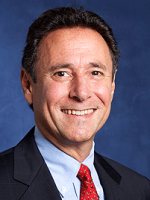An employer’s confidentiality and non-disclosure rule and media contact rule do not violate the National Labor Relations Act (NLRA), the National Labor Relations Board (NLRB) has held. LA Specialty Produce Company, 368 NLRB No. 93 (2019). The Board also substantially clarified its decision in Boeing Co., 365 NLRB No. 154 (Dec. 15, 2017). NLRB Chairman John Ring and Members Marvin Kaplan and William Emanuel were in the majority. Member Lauren McFerran dissented.
In Boeing Co., the Board overturned the Obama-Board standard for reviewing employer work rules and instituted a more employer-friendly standard.
Boeing Clarified
Perhaps sensing some confusion about its Boeing decision, the Board took pains to review the decision and to clarify it “for the guidance of parties in future litigation.”
The NLRB reiterated that it will categorize company rules into three categories:
Category 1 rules are lawful to maintain “because (i) the rule, when reasonably interpreted, does not prohibit or interfere with the exercise of NLRA rights; or (ii) the potential adverse impact on protected rights is outweighed by justifications associated with the rule.” [The Board redesignated these as Categories 1(a) and (b).]
Category 2 “include[s] rules that warrant individualized scrutiny in each case as to whether the rule would prohibit or interfere with NLRA rights.”
Category 3 rules are unlawful “because they would prohibit or limit NLRA-protected conduct, and the adverse impact on NLRA rights is not outweighed by justifications associated with the rule.”
According to the Board, the Categories have been established to provide employers with “certainty and predictability” regarding the legality of their rules. Over time, as the Board reviews and determines the category placement of the panoply of employer rules presented for review, such as those governing conflicts of interest, confidentiality, contacts with the media, professionalism, incivility, and so on, by virtue of where those rules have been categorized by the NLRB, employers will know that their similar rule likely is lawful (because the similar rule was placed in Category 1 (a) or (b)), subject to individualized scrutiny (because the similar rule was placed in Category 2), or unlawful (because the similar rule was placed in Category 3).
The NLRB also explained that:
-
Boeing first requires the Board to determine whether a facially neutral rule, reasonably interpreted, would potentially interfere with the exercise of NLRA rights. The Board does this by viewing the rule through the lens of “an objectively reasonable employee who is ‘aware of his legal rights but who also interprets work rules as they apply to the everydayness of his job.’”
-
The NLRB General Counsel has the burden to prove to the Board that the facially neutral policy would be interpreted by a reasonable employee to potentially interfere with the exercise of their Section 7 rights. If the General Counsel does not meet his burden, the Board’s inquiry ends, and the rule is considered lawful under Category 1(a).
-
If the General Counsel meets his burden, the Board will “evaluate … (i) the nature and extent of the potential impact on NLRA rights, and (ii) legitimate justifications associated with the rule.”
-
The Board will find that “the rule’s maintenance … violate[s] [the NLRA] if … the justifications are outweighed by the adverse impact on rights protected by Section 7.”
-
If the balance falls in favor of the employer’s justifications for the rule, the rule will be lawful under Category 1(b).
-
If the adverse impact on Section 7 rights outweighs the employer’s justifications, the rule will be unlawful under Category 3.
-
Where it is not possible to draw any broad conclusions about the legality of a particular rule, those rules will fit in Category 2.
Confidentiality/Non-Disclosure and Media Rules
The following rules were before the Board for review:
-
Confidentiality and Non-Disclosure Rule. “Every employee is responsible for protecting any and all information that is used, acquired, or added to regarding matters that are confidential and proprietary of [the employer] including but not limited to client/vendor lists.”
-
Media Contact Rule. “Employees approached for interview and/or comments by the news media, cannot provide them with any information. Our President, Michael Glick is the only person authorized and designated to comment on Company policies or any event that may affect our organization”
NLRB Decision
The majority of the NLRB determined that neither rule violated the NLRA because, when “reasonably interpreted,” the rules do not prohibit or interfere with employees exercising their Section 7 rights. Therefore, they belonged in Category 1(a) and were lawful.
Confidentiality/Non-Disclosure Rule
The Board found that an objectively reasonable employee would not interpret this rule as potentially interfering with an employee’s exercise of Section 7 rights. Therefore, no consideration of business justification was necessary to find the rule lawful under Boeing.
For additional support, the Board also noted that it “generally categorizes rules that prohibit the disclosure of confidential and proprietary customer and vendor lists as Category 1(a) rules.” The NLRB said such rules do not target information “central to the exercise of Section 7 rights, such as employee salary or wage information.” It also said they do not “prohibit employees from appealing to customers or vendors for support in a labor dispute, or from disclosing the names and locations of customers or vendors derived from sources other than the employer’s own confidential records.”
Media Contact Rule
In upholding this rule under Category 1(a), the Board held that, when reasonably interpreted, the rule governed when employees are approached by the news media for comment and only on the employer’s behalf. According to the Board, “an objectively reasonable employee would understand that the second sentence qualifies the first sentence by explaining that only [the company’s president] is authorized and designated to comment on Company matters.” The Board underscored the importance of “[t]he phrase ‘authorized and designated’ … because it signifies that [the president] is the [employer’s] spokesperson, i.e., the only person authorized to comment about company matters on the [employer’s] behalf.” Thus, the NLRB said, when the two sentences are read together, “and from the perspective of a reasonable employee, the rule provides that because only [the president] is authorized and designated to comment on company matters, employees approached for comment by the news media cannot speak on the [employer’s] behalf.” The NLRB also noted that it designates rules that prohibit employees from speaking to the media on behalf of their employer as Category 1(a) rules.
Takeaways
-
Employers should familiarize themselves with the types of rules the NLRB has determined fall in Categories 1(a) and (b). Similar rules maintained by employers also likely will be considered lawful.
-
While rules that are lawful under Category 1(a) do not require justification by an employer, it is best to have a substantial legitimate reason for maintaining a rule that would be found lawful under Category 1 (b).
-
Rules that prohibit employees from disclosing the names of company customers and vendors to third parties, such as labor organizations, may violate the NLRA as they may prohibit disclosure of customers’ or vendors’ names and locations that derived from sources other than the employer’s confidential records.
-
Employers should conduct thorough reviews of their workplace rules and policies with labor or employment counsel to ensure they comply with applicable law.







 />i
/>i

